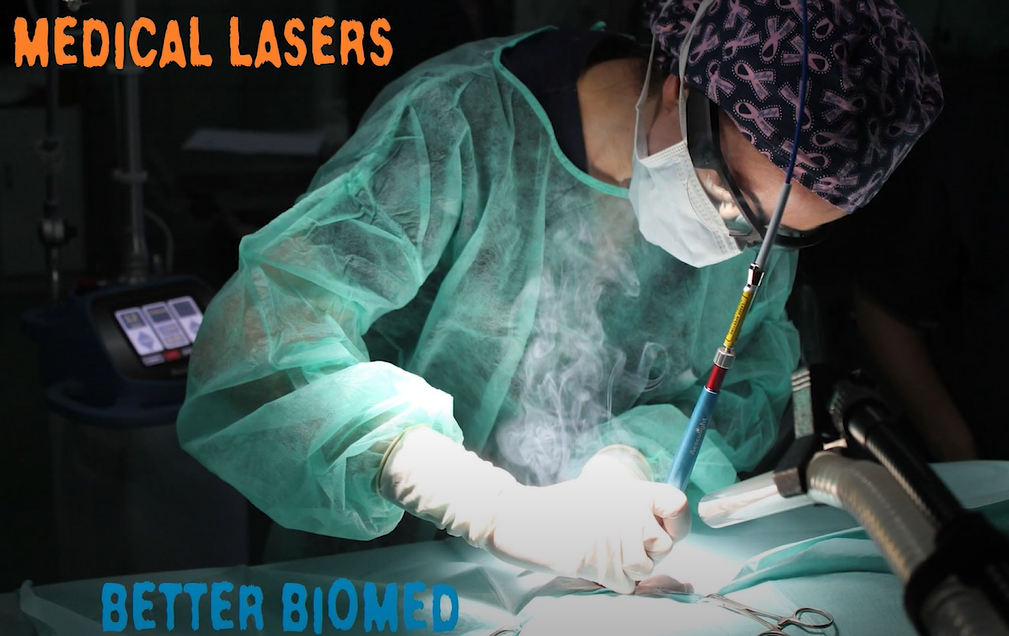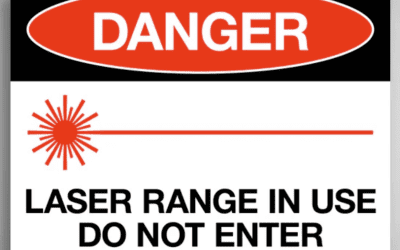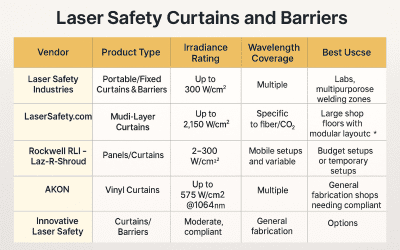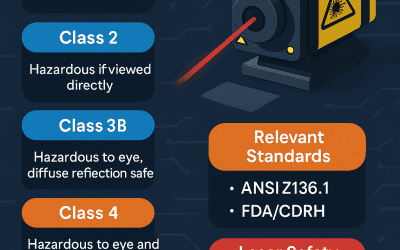Common Medical Lasers and their Uses
Many medical procedures now are routinely done with lasers. There are many different types of lasers that are used for different procedures and therapies.
Laser Modes
Different laser operation modes are available:
Continuous or CW mode
Continuous pumping of energy into the lasing medium keeps the population inversion steady, so that steady light emission is achieved, resulting in a continuous wave laser.
Chopped Mode
The CW laser may have a shutter-interrupted output to artificially produce short laser pulses (usually 100-500 ms), each with the same maximum power level as in the CW mode. The period of the laser beam when the laser is in use is called the Duty Cycle or DC.
Pulsed Mode
Intermittent pumping in a gas medium gives rise to pulsed lasers, often with resulting higher peak power than in CW mode.
Q-switched laser creates a giant laser pulse (a very high-powered flash) by using a high-speed shutter inside the resonant (reflecting) cavity to allow extremely fast discharge of the stored energy at high peak intensity.
Types of Lasers
The following are some common medical lasers:
Gas Lasers
The carbon dioxide laser is a gas laser that uses infrared radiation at 10600 nm which is absorbed by water in the tissues, vaporizing it at only 100 oC, and sealing blood vessels. It also closes lymph vessels to prevent tumor cells from spreading, and seals the cut ends of nerves to prevent the formation of a neuroma. It is used in ENT, gynecology, plastic and maxillofacial surgery, and urology. It cannot be carried by flexible fibers at present.
The argon laser is another blue-green gas laser with several wavelengths, mostly at 488 and 514 nm. It coagulates blood vessels efficiently, and is used in microsurgery on the ear, bleeding ulcers of the stomach and duodenum, and the removal of vascular lesions or polyps, and small tumors of the skin, both benign and malignant. It can be used with flexible optical fibers.
Fiber Lasers
The Nd-YAG (Neodymium-YAG) laser is a doped fiber laser that produces infrared light at 1060 nm and is used to seal both normal and abnormal blood vessels. It is absorbed in colorless as well as pigmented tissues of all sorts. It is used to treat stenotic or granulomatous lesions, benign tumors and to debulk cancers, in the trachea, bronchial tree, gastrointestinal and urologic tract.
Dye Lasers
The pulsed yellow dye laser is an example of a dye laser (580–595 nm), and is widely used to disrupt blood vessels as oxyhemoglobin absorbs yellow light best.
Solid-State Lasers
The KTP laser uses a potassium-titanyl phosphate crystal pumped by an Nd: YAG laser, producing green light at 532 nm. It coagulates blood vessels.
Excimer Lasers
The UV excimer lasers is produced from ionized noble gases and performs ablation by converting tissue from solid to vapor directly without much heating.
How can Laser Safety Certification help?
If you are responsible for your surgical laser safety, you should ensure your employees obtain the best safety training available and sign them up for our courses for Healthcare Laser Safety and Healthcare LSO certification today.
Or see our Cosmetic Laser Safety and Cosmetic LSO Certification courses if those apply to your organization and get certified today.
We also have an FAQ section with common answers about our courses, certification options and kit offerings. Get started now. It’s easy.
Sources
[1] Better Biomed YouTube Channel: https://www.youtube.com/watch?v=JlpRgsfMZUk




